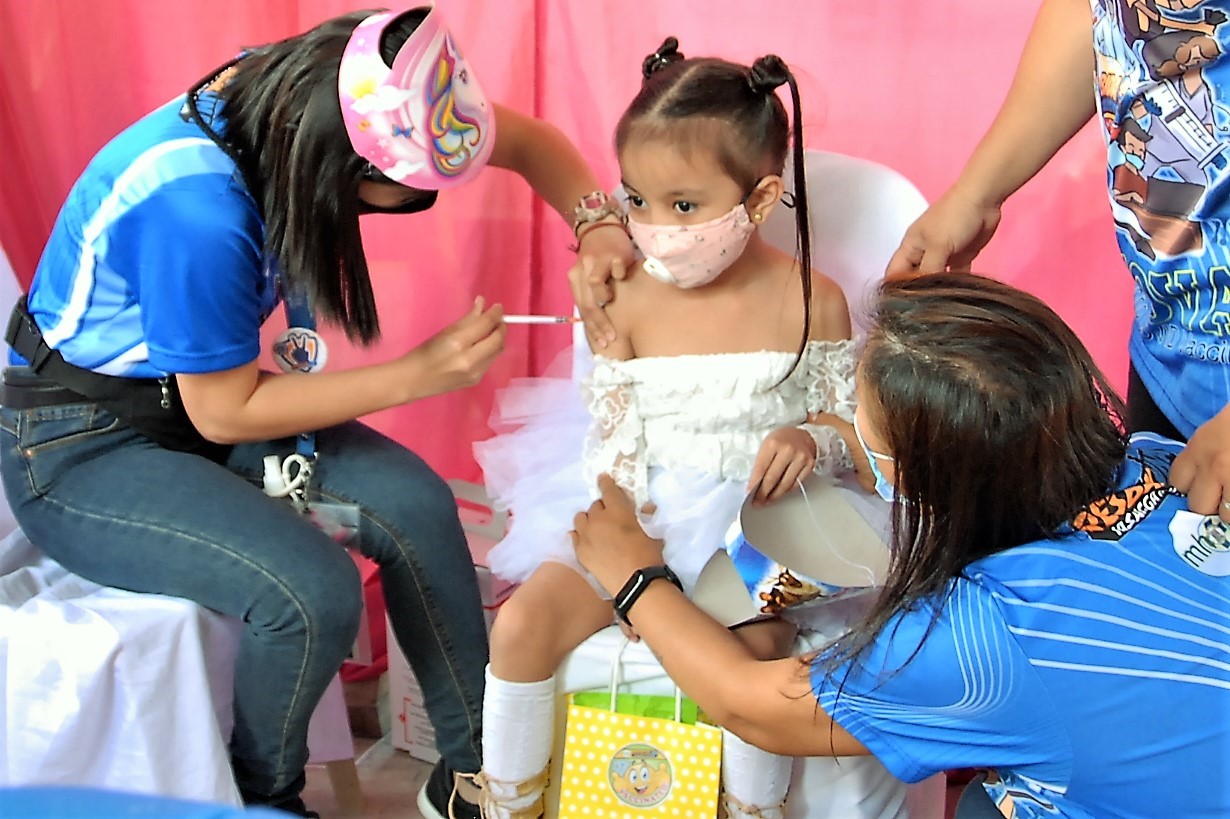Senior vaccination critical to easing lockdown

AT LEAST eight of 10 senior Filipino citizens must have been vaccinated before the lockdown of an area can be eased to the most relaxed level in a five-tier system, according to the Philippine Health secretary.
“Before we deescalate to Alert Level 1, the vaccination rate of the A2 and A3 groups should be 80%,” Health Secretary Francisco T. Duque III told a taped Cabinet meeting on Monday night, referring to seniors and seriously ill adults. “If they will not reach this, then we cannot deescalate.”
Vaccine czar Carlito G. Galvez, Jr. said Philippine authorities would concentrate on vaccinating the remaining 3 million seniors and seriously ill people.
Daily vaccinations against the coronavirus had been halved to 500,000, he said, citing the low turn-out during the recent national vaccination days. “We need to visit villages and go from house to house to raise the daily output again.”
He added that the government wants to ensure that at least 70% of people in every region get injected with life-saving vaccines. People are also encouraged to get booster shots.
Mr. Galvez said 8.3 million people aged 12 to 17 or 65% of adolescents have completed their primary vaccination. Vaccination of the 5 to 11 age bracket had been successful, he added.
He said 437,939 of children aged 5 to 11 have received their first dose, with only 68 experiencing minor side effects and one major side effect.
Those who experienced side effects were treated immediately.
About 62.65 Filipinos had been fully vaccinated against the coronavirus as of Feb. 21, while 61.89 million people have received their first dose, Cabinet Secretary Karlo Alexei B. Nograles told a news briefing on Tuesday. The government has injected 9.78 million booster shots.
The government is scrambling to vaccinate more people as it seeks to place all areas in the country under Alert Level 1.
The Department of Health (DoH) posted 1,019 infections on Tuesday — the fourth straight day the tally fell below 2,000 — bringing the total to 3.65 million.
The death toll hit 55,776 after 13 more patients died, while recoveries rose by 2,988 to 3.54 million, it said in a bulletin.
The agency said 6.4% of 18,177 samples from Feb. 20 tested positive for coronavirus disease 2019 (COVID-19), still above the 5% threshold set by the World Health Organization (WHO).
Of 56,668 active cases, 704 did not show symptoms, 51,395 were mild, 2,840 were moderate, 1,425 were severe and 304 were critical.
DoH said 96% of new cases occurred on Feb. 9 to 22. The top regions with cases in the past two weeks were Metro Manila with 197, Calabarzon with 124 and the Ilocos region with 85 infections. It added that 46% of new deaths occurred in February and 38% in January.
It said 260 duplicates had been removed from the tally, 240 of which were recoveries, while 52 recoveries were relisted as deaths. Five laboratories failed to submit data on Feb. 20.
The National Capital Region and several other areas have been placed under Alert Level 2 until the end of February. A coronavirus task force might announce new lockdown levels for March at the weekend, Mr. Nograles said.
Metro Manila mayors were set to meet later on Tuesday to recommend the alert level for the region, San Juan Mayor Francis M. Zamora told the ABS-CBN News Channel.
Mr. Nograles said 13,492 foreign tourists have arrived in the Philippines since it reopened its borders to fully vaccinated travelers from visa-free countries. He added that 11,334 returning Filipinos also entered the country.
Meanwhile, Health Secretary Maria Rosario S. Vergeire said all regions in the country posted fewer than 1,000 cases in recent days.
The Philippines, which remains at low risk from the virus, continues to see a steady decline in infections she told the same briefing.
“All island groups — Luzon, Visayas and Mindanao — show a gradual decline in cases,” she said in Filipino. All regions were under low risk from the coronavirus except Cordillera and Davao.
Ms. Vergeire said the Omicron variant had caused the highest increase in daily cases at 34,903 during its peak, although it had the lowest number of severe and critical cases.
Fewer than 30 in 1 million doses of coronavirus vaccines had caused serious side events, she added. “The benefits our vaccines provide greatly outweigh the risks.” — Kyle Aristophere T. Atienza



